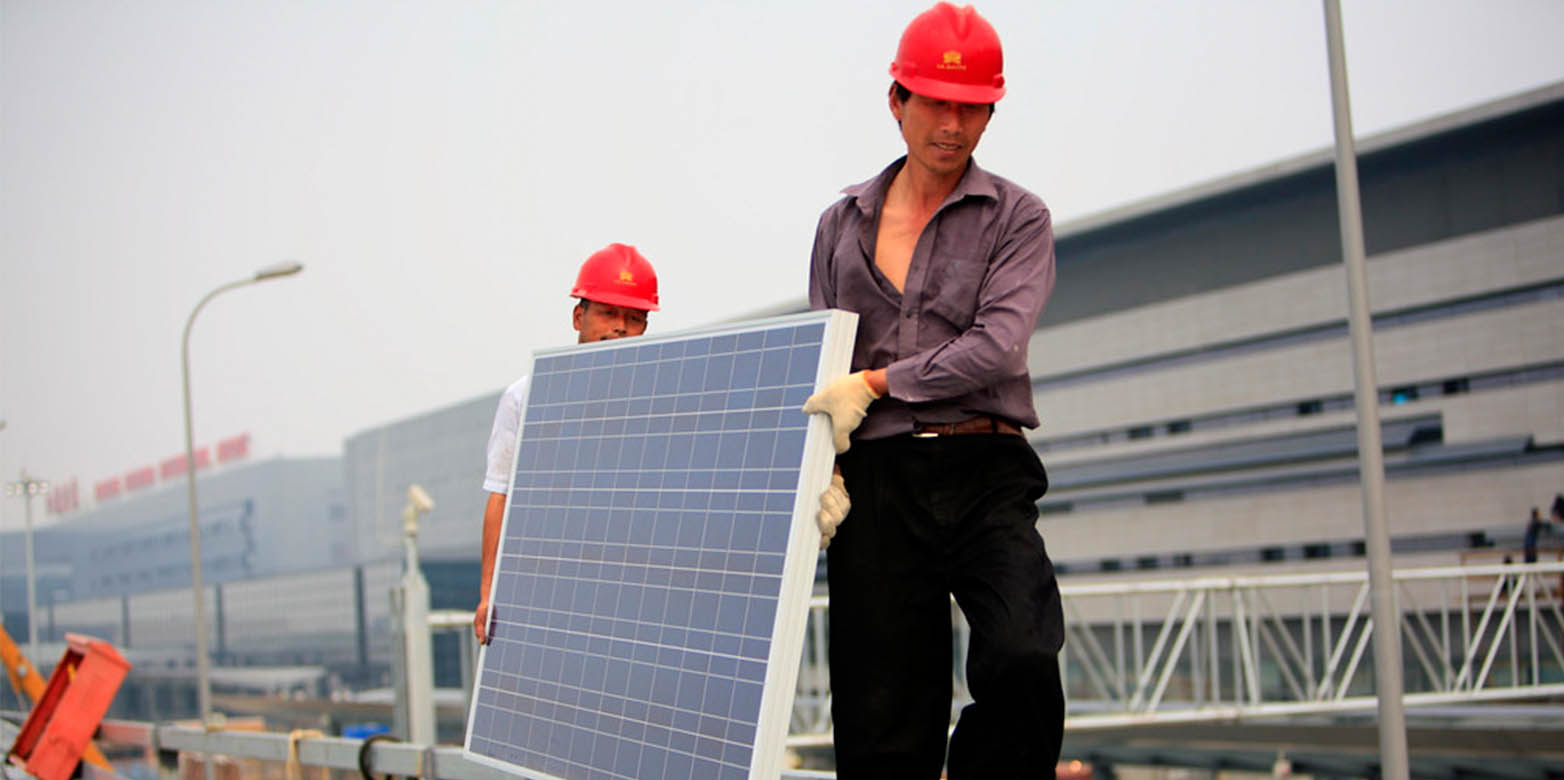More energy, thanks to cleaner air
- D-USYS
- Institute for Atmospheric and Climate Science
If the air were as clean as it was back in 1960, China’s photovoltaic plants would currently be producing 13% more electricity. This is the conclusion of researchers from D-USYS, based upon a larger series of measurements from China.

Today, China produces more solar photovoltaic (PV) electricity than any other country on earth. 175 gigawatts of solar panels were connected to the grid in China in 2018, more than a third of the world's total capacity. By the year 2030, the country is forecast to have at least 400 gigawatts of PV capacity to provide about 10% of its primary energy from zero-emission solar power — a target that is expected to be achieved much earlier.
Polluted air leads to less solar energy
Based upon radiation data collated from 120 monitoring stations throughout China, researchers have calculated that PV systems could produce around 11-15% less electricity in 2015 than if the same systems had produced the same electricity in the 1960s. This is a direct effect of the so-called global dimming. "Global dimming leads to reduction in the intensity of sunlight when it reaches the earth’s surface," explains Martin Wild, Adjunct Professor at the Institute for Atmospheric and Climate Science (IAC) at ETH Zurich. The main causes are sulphate aerosols and soot from industry and transport. As part of their study, the researchers then correlated the effect of global dimming with industrial emissions data, to quantify the role of air pollution in the reduction of available sunlight. "The results suggest that a return to the clean air of the early 1960s would massively improve the productivity of existing and future PV systems," says Stefan Pfenninger, co-author of the study at the Institute for Environmental Decisions (IED).
Improving air quality is also economically beneficial
The solar energy industry stands to reap significant rewards from an improvement in air quality. In China, a return to the higher levels of sunlight seen in the 1960s would result in a 12-13% increase in power generation. This would amount to an additional production of 51-74 TWh to meet expected capacity by the year 2030.
This means that poor air quality could effectively be responsible for a projected economic loss in the region of 4.6-6.7 billion dollars. This reflects the amount of energy the Chinese plants could have produced by the year 2030, had air quality remained at the same level as it was around 60 years ago.
An upwards trend
"When it comes to addressing air pollution, China is trailing Europe by about 20 years," says Martin Wild; "but the overall trend is positive the trend has also been positive in China recently, with a slight increase in sunlight on the earth's surface". Sulphur dioxide and soot emissions from coal-fired power stations have fallen since 1995 as a result of emission control measures. Additionally, the Olympic Games proved to be a wake-up call for China’s environmental policymakers. In 2008, during the Olympic Gamesin Beijing, for example, sunshine increased slightly again. However, air pollution remains a significant environmental and health issue in China. In particular, emissions from industry in China’s biggest cities have continued to rise since the 1960s.
Sweerts B, Pfenninger S, Yang S, Folini D, van der Zwaan B, Wild M. Estimation of losses in solar energy production from air pollution in China since 1960 using surface radiation data. Nature Energy. DOI: external page 10.1038/s41560-019-0412-4